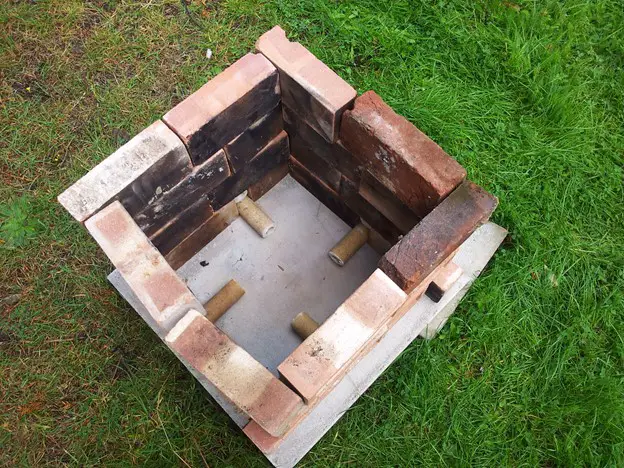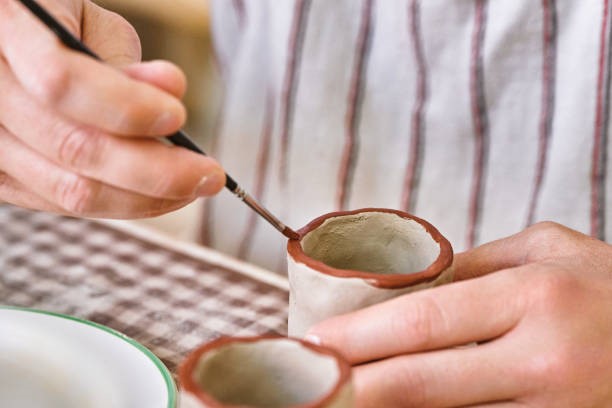Pottery as an art date back to the oldest days of the human civilization. As the potter’s wheel gradually went from being an entirely manual tool to a technical machine that works on its own, so did the kiln which fires the pottery. Today, we have the largest range of kiln solutions and kinds to support our ambitious pottery ventures. One such type is the sawdust kiln, which may not entirely be a new solution, but when you discover it, the changes are immaculate. The kiln works primarily by incorporating sawdust, which leaves beautiful imprints on the pottery, which adds to its quality. Discover in this article the easiest way to set up your sawdust kiln and fire your pottery in it!
Delving into the Functioning of a Sawdust Kiln
Sawdust firing primarily works on the principle of reduction firing. While traditional kilns work with the continuous flow of oxygen, a sawdust kiln restricts the access to oxygen for its pottery. While the pottery inside faces soaring temperatures, sawdust is introduced into this equation. With no oxygen, the sawdust smolders instead of combusting. The pottery is thus exposed to a diverse range of ways in which the designs will be affected. By changing the temperatures and amount of sawdust, various results can be expected.
Setting Up a Sawdust Kiln from Scratch
Once you realize how well a sawdust kiln works, you can gather materials to make your own. Here’s how you can set it up.
Selecting the Kiln Design
Start by deciding on the right kiln design. A portable kiln will suit if you are doing this to test the process, are often moving, or do not have a fixed working space. On the other hand, you can create a permanent structure for this kiln in a designated space if you wish to carry out work in this kiln for a long time.
Constructing the Kiln
Constructing the kiln is a step-by-step process that you can go about easily. Follow this guide to do it correctly.
1. Gathering Materials
The kiln stands on the foundation of heavily fire-resistant bricks, cement, and other insulating materials you can find. Only invest in materials known to stand at high temperatures to allow even heat distribution.
2. Building the Kiln Structure
Start setting up the structure of the kiln by carefully laying down the bricks and the cement in a desired area. Consider the usual size of the pottery you make, as well as the space you can spare before starting.
3. Introducing Sawdust Portal
Use the top or create an opening on the sides from where you will introduce the sawdust. Make the opening a secure spot so you can do so without burning yourself.
Firing the Pottery in a Sawdust Kiln
Now comes the part where you fire the pottery. With the kiln all dried up, here is how to proceed now.
1. Temperature Gradation
Depending on whether you put the fire on manually or through a gadget control, carefully increase the temperature to prepare the kiln. Start slow and then pile up the heat to avoid thermal shock for the pottery, which often causes unwanted cracks.
2. Sawdust Introduction
When the smoldering hot temperatures interact with the pottery, you must introduce the sawdust into the kiln. Carefully put the required amount to achieve a range of subtle greys and blacks that look amazing.
3. Maintaining the Reduction Atmosphere
Keep track of the temperature in between and check if it fluctuates too much. Being present allows you to enjoy the process and ensure the pottery’s safety.
4. Gradual Cooling
When your pottery has been through the heating, it shall be allowed to rest. Set the pieces aside at room temperature without exposing them to extreme temperatures.
Now that you know how to fire in a sawdust kiln, you can easily create different pottery projects. Here are our top picks for pottery items that can be beautifully enhanced using a sawdust kiln.
| Pottery Project | How to Make It? |
| Raku Bowls | Irregular crackle patterns characterize these bowls. They may come out with glazy, metallic effects in a sawdust kiln, with colors ranging from deep red to black. |
| Textured Vases | They have organically earthy textures with random crackling due to the sawdust. |
| Sculptural Figures | These objects are heavily contoured, carved, and designed. They come out beautifully enhanced and smokey from this kiln. |
| Smoke-Fired Plates | These plates have patterns of sawdust with light and dark shades combined. |
| Rustic Teapots | They are roughly textured pottery that has cracks made by the sawdust. These teapots give off an aesthetically rustic vibe. |
| Decorative Tiles | They boast marbling effects that look intricately designed and are perfect for ornamental purposes. |
Safety Precautions to Take Care of When Using Sawdust Kiln
While sawdust kilns ensure beautiful results, they are also the kind to be wary around. Here is a range of robust security measures you must adopt before using the kiln.
Personal Protective Equipment
The making of a sawdust kiln is an exciting process, but it is not without consequences if you neglect safety. Here are some personal precautions to take before you start and while you work.
1. Heat-Resistant Gear
Heat-resistant gloves and safety goggles are necessary when dealing with a heated object. These will protect your hands and eyes from the extreme temperatures of the pottery and the kiln.
2. Respiratory Protection
With the involvement of sawdust, use a protective mask throughout the process. It will ensure you do not inhale harmful fumes or finer sawdust. AirGearPro G-500 Reusable Respirator Mask is one of the best protective masks to wear while working with a sawdust kiln.
Kiln Safety Measures
Your sawdust kiln will function even better when you take ample safety measures. Here are three key things that remain uncompromised during and after pottery burning.
1. Effective Ventilation
Even if the kiln does not have ventilation, the room must surely have it. If you are doing this out in the open, that is quite great. But if you use an indoor space, make sure the windows are open at all times.
2. Fire Safety Protocols
When working in any space that involves firing, kindly keep a fire extinguisher nearby. It will help you deal effectively in times of an unwanted emergency.
3. Regular Maintenance
Regularly inspect the kiln after and before its use. Keep it clean from debris and excessive sawdust at all times. It will help you stay clear of any mishaps.
Conclusion
Sawdust kilns are one of the most exciting ways to fire your pottery. The creativity factor in this kiln is out of bounds, allowing you to experiment as much as you want. Let your artistic vision run wild by achieving enhanced and beautiful finishes every time.








